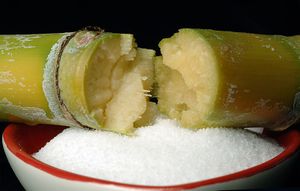Knowledge fuels change - Support energypedia!
For over 10 years, energypedia has been connecting energy experts around the world — helping them share knowledge, learn from each other, and accelerate the global energy transition.
Today, we ask for your support to keep this platform free and accessible to all.
Even a small contribution makes a big difference! If just 10–20% of our 60,000+ monthly visitors donated the equivalent of a cup of coffee — €5 — Energypedia would be fully funded for a whole year.
Is the knowledge you’ve gained through Energypedia this year worth €5 or more?
Your donation keeps the platform running, helps us create new knowledge products, and contributes directly to achieving SDG 7.
Thank you for your support, your donation, big or small, truly matters!
Bioenergy: Techno-Economic Background
►Back to Bioenergy Decision Support Tool
Here you find a summary of the chapter of the UN-Energy Bioenergy Decision Support Tool (DST). The complete chapte can be found here.
Definitions and Terms
Definitions and Terms demonstrate the Unified Bioenergy Terminology of the FAO (FAO-UBET 2004) by defining some key terms (Biomass, traditional and modern Bioenergy, measurement and properties of Bioenergy).
Biomass Resources
The chapter Biomass Resources gives a short overview about the energy potential of different types of biomass and where to cultivate them: The way plants conduct photosynthesis is essential for their energetic value and for most of the plants, there are very specific regions where they grow. A brief outline of how a biomass resource assessment might be conducted, enumerates the essential parameters for energy crops and biomass-wastes: Identification of infrastructure for cultivation, estimation of production/transport/labor costs or, for biomass-wastes, where to find or locate processing sites.
Bioenergy Production Chain
The Bioenergy Production Chain names important facts about processing, transport and storage of biofuels. This includes processing-advice such as to press biomass into pellets.
Sectors and Applications
The different sectors being of relevance for the energetic use of biomass are analyzed: these include households, village, heat and power, industry and transport.
Bioenergy Conversion Processes
In this part,the various are described, ways feedstocks such as oil or sugar crops can be converted into biofuels like biodiesel, bioethanol or hydrogen via different ways of processing such as fermentation or gasification. Furthermore, properties of processing methods are introduced.
Bioenergy Systems
Bioenergy Systems differ with respect to their efficiency, scale and cost. The presence of (non-) energetic by-products further complicates the evaluation of processing methods. Some issues and advises concerning the processing of biomass are named, such as anaerobic digestion for biomass containing a lot of moisture.
Liquid and Gaseous Fuels
Liquid and Gaseous Fuels are two kind of fuels that require different crops to be made from. Sugar and starchy crops are used for producing liquid fuel whereas biogas is often made from wet sources such as municipal solid waste.
Further Information




















